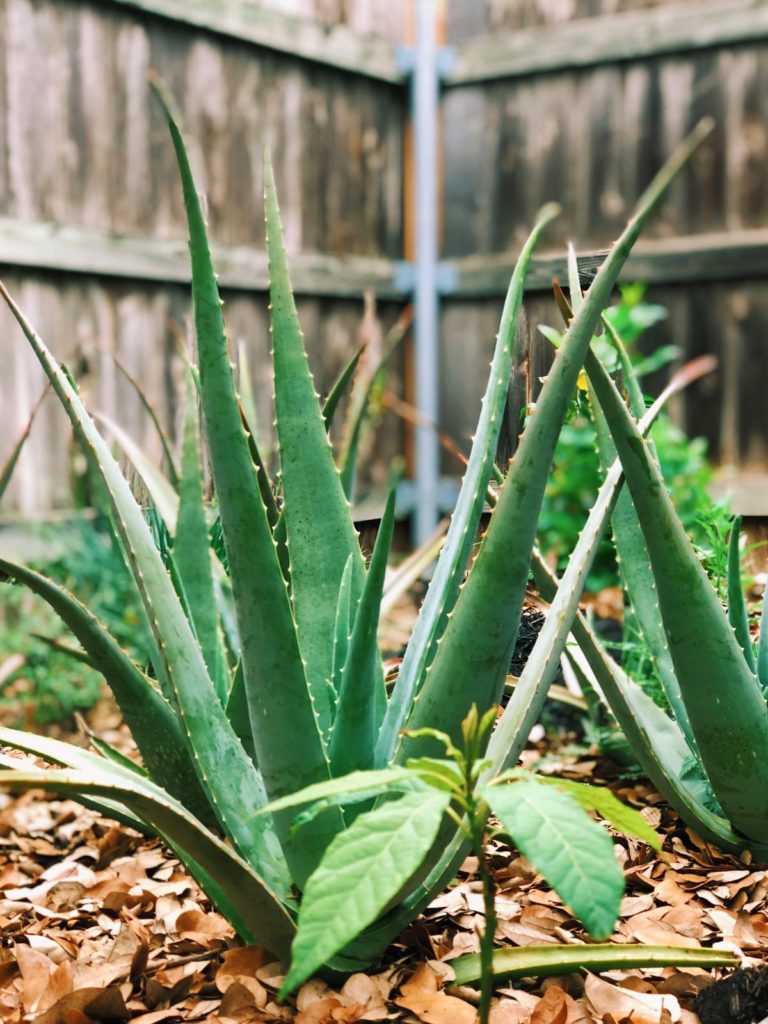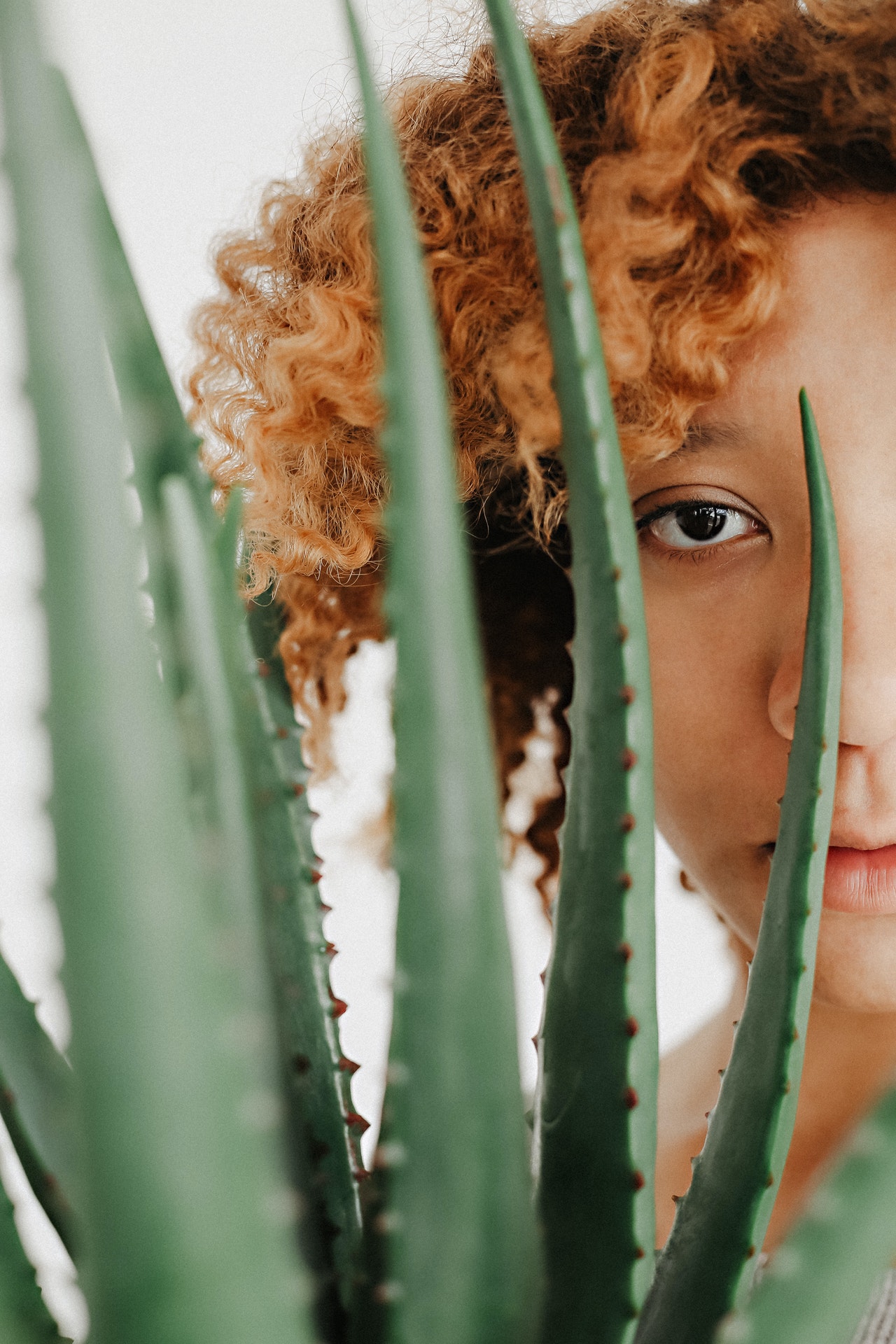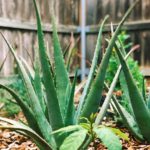 Jump to Recipe
Jump to Recipe
Aloe vera. It seems that this plant comes in and out of trend. Growing up my mum drank Aleo Vera juice and we often used the gel for burns, rashes and even as a soft edge control. If you are unfamiliar with the plant, Aloe Vera is a succulent that thrives growing wild. It’s prickly long leaves are full of a gel-like substance which is what is often utilised in medical and cosmetic products. The main feature of the plant is that it is made up of 99% water and has over 75 active nutrients, this plant is defiantly unique.
At the beginning of this year (2020) I decided I needed to be more intentional with combating my (and my daughter’s) dry hair. The Texas heat in combination with my over-simplistic regimen which did not include products that retain moisture led to the dryness. As my locs have formed and are becoming more mature, I have noticed that plain ol’ water and Jojoba oil wasn’t gonna cut it.
Keep reading to find my easy recipe for Aloe Vera spray great for hair and to refresh the skin. Now let’s get into the benefits of this plant.
- Vitamins & Nutrients
Rich with vitamins Aloe Vera contains vitamins A, C and E (C and E are powerful antioxidants). It is a great source of vitamin B, B1, B2,B3, B6 and B12 vitamins vital for optimal hair growth!
Amino acids are especially vital for healing wounds and repairing tissue, Aloe vera comprises of about 20 amino acids and it has all the eight essential amino acids. The plant includes minerals such as magnesium, potassium, zinc, sodium, and chlorine. Aloe Vera is full of various enzymes including Alkaline Phosphatase (enzyme naturally found in the liver) and many more.
2. Promotes healthy skin
Aloe is an ingredient in many skincare products today. With the plant being made up of 99% water, it strengthens and rejuvenates the moisture in the skin. It is said to fight off damaging rays from the sun and toxic gasses that damage the skin cause it to age (known as free radicals).
3. Promotes and retains moisture
As already stated the gel is mostly water, making it great for hair, locking the moisture in and leaving hair shiny, soft and smooth. This is particularly important for curly and coily hair types that get dry more easily and are in need of products that promote moisture. The slip of the gel makes for a great detangling product for loose natural hair.

4. Heals burns and sores
People may already be familiar with the use of Aloe Vera gel for sores, accelerating the healing process. It helps decrease redness in the skin, enabled by vitamin C and E.
Anti-bacterial and anti- fungal
The anti-bacterial and anti-fungal properties help to reduce dandruff and sores that may occur or the scalp. The enzymes in Aloe Vera promote the regeneration of the skin and hair follicles, which as a result aids the reduction of dandruff.
Considering the time we have recently been living in people have resorted to DIY antibacterial gels using Aloe Vera – due to its natural antibacterial properties.
Fresh Aloe Vera gel can certainly be used directly in natural hair types, though there are some things to be mindful of. When the leaf is cut away from its roots a yellow sap that drips is said to be toxic and should be dipped out before using the internal gel. If the gel is not prepared properly there will be small particles from the plant stick to hair strands or in locs.
Check out my easy Aloe spray and let me know your thoughts.
Easy Multi-purpose Aloe Vera Spray
Equipment
- Blender
- Knife
- Measuring cup
- Spoon
- Strainer
- Empty spray/mist bottle
- Funnel
Materials
- 1 Leaf Aloe Vera
- 10 drops Essential Oil (optional)
- 1/3 Cup Water
Instructions
- Cut away the end of the leaf. Cut about 4 inch of the widest part of the left and carefully slices away the prickly edges.
- Working with the 4 inch piece, use your knife to slice through the middle of the gel substance. This will give you two parts.
- Use a spoon to scrap the jelly substance from both parts of the leaf into a blender with half of the water you have set aside. Blend for 30 seconds.
- Strain content into a measuring cup.
- Pour liquid back into the bender and then repeat step 4 another 1-2 times.
- Use a funnel to help pour liquid into an empty spray bottle.
- Add 8-10 drops of essential oil (this is optional)
Video
Notes
- Shelf life- 1-2 weeks depending on whether in it kept in or outside if the fridge.
- I do not add any oils (other than essential oils) to my mixture. To ensure the optimal shelf life I keep my spray in the refrigerator. The first time I made this solution I added oil, the liquid separated and it was difficult to spray.
Sources:https://www.medicalnewstoday.com/articles/318591#contains-healthful-compounds- https://food.ndtv.com/beauty/6-amazing-benefits-aloe-vera-hair-skin-weight-loss-1221869 https://www.aminoacid-studies.com/amino-acids/what-are-amino-acids.html https://www.prevention.com/beauty/skin-care/a25995450/aloe-vera-benefits-for-skin/ Disclaimer: This information is for educational and informational purposes only. I am not a medical professional.

